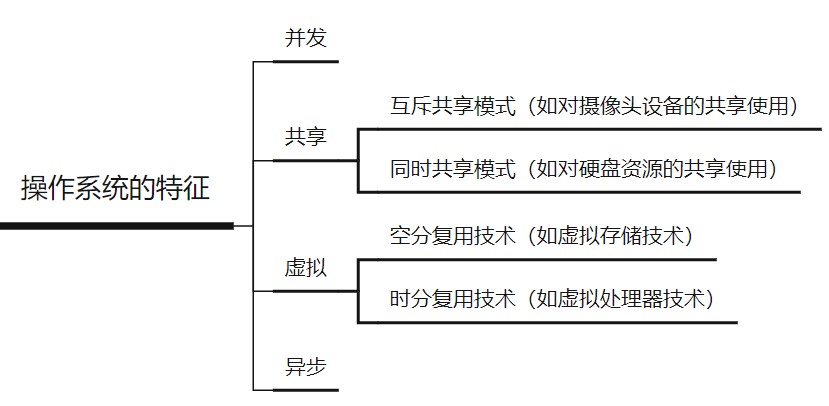system_server 进程主要是用于创建系统服务,AMS、WMS、PMS 都是由它创建的。 具体来说,SystemServer 进程被创建后,主要做了以下工作:
- 启动
Binder线程池,这样就可以与其他进程进行通信; - 创建
SystemServiceManager,用于对系统服务进行创建、启动和生命周期管理; - 启动各种系统服务;
1 Zygote 处理 system_server 进程
在 Zygote进程启动过程 中讲到 ,在 ZygoteInit.main 方法中,通过调用 forkSystemServer 方法启动 system_server 进程,一些相关时序图:

ZygoteInit.forkSystemServer 代码如下所示:
// /frameworks/base/core/java/com/android/internal/os/ZygoteInit.java
private static Runnable forkSystemServer(String abiList, String socketName,
ZygoteServer zygoteServer) {
...
/* For child process 当前运行在 system_server 进程中 */
if (pid == 0) {
if (hasSecondZygote(abiList)) {
waitForSecondaryZygote(socketName);
}
// 关闭 Zygote 进程创建的 Socket
zygoteServer.closeServerSocket(); // 1
return handleSystemServerProcess(parsedArgs); // 2
}
return null;
}
system_server 进程复制了 Zygote 进程的地址空间,因此也会得到 Zygote 进程创建的 Socket,这个 Socket 对于 system_server 进程没有任何用处,因此,需要在注释 1 处关闭 Socket。 接着,在注释 2 处调用 handleSystemServerProcess 方法来启动 system_server 进程。handleSystemServerProcess 方法的代码如下所示:
// /frameworks/base/core/java/com/android/internal/os/ZygoteInit.java
private static Runnable handleSystemServerProcess(ZygoteArguments parsedArgs) {
...
if (parsedArgs.mInvokeWith != null) {
...
} else {
createSystemServerClassLoader(); // 1
ClassLoader cl = sCachedSystemServerClassLoader;
if (cl != null) {
Thread.currentThread().setContextClassLoader(cl);
}
/*
* Pass the remaining arguments to SystemServer.
*/
return ZygoteInit.zygoteInit(parsedArgs.mTargetSdkVersion,
parsedArgs.mRemainingArgs, cl); // 2
}
}
private static void createSystemServerClassLoader() {
if (sCachedSystemServerClassLoader != null) {
return;
}
final String systemServerClasspath = Os.getenv("SYSTEMSERVERCLASSPATH");
// TODO: Should we run optimization here?
if (systemServerClasspath != null) {
sCachedSystemServerClassLoader = createPathClassLoader(
systemServerClasspath, VMRuntime.SDK_VERSION_CUR_DEVELOPMENT);
}
}
在注释 1 处创建了 ClassLoader。在注释 2 处调用了 ZygoteInit.zygoteInit 方法,代码如下所示:
// /frameworks/base/core/java/com/android/internal/os/ZygoteInit.java
public static final Runnable zygoteInit(int targetSdkVersion, String[] argv,
ClassLoader classLoader) {
if (RuntimeInit.DEBUG) {
Slog.d(RuntimeInit.TAG, "RuntimeInit: Starting application from zygote");
}
Trace.traceBegin(Trace.TRACE_TAG_ACTIVITY_MANAGER, "ZygoteInit");
RuntimeInit.redirectLogStreams();
RuntimeInit.commonInit();
// 启动 Binder 线程池
ZygoteInit.nativeZygoteInit(); // 1
// 进入 system_server 的 main 方法
return RuntimeInit.applicationInit(targetSdkVersion, argv, classLoader); // 2
}
在注释 1 处调用 ZygoteInit.nativeZygoteInit 方法,此处调用的是 Native 层的代码,用来启动 Binder 线程池,这样 ,system_server 进程就可以使用 Binder 与其他进程进行通信。注释 2 处是用于进入 system_server 的 main 方法。
以下分别说明
1 启动 Binder 线程池
ZygoteInit.nativeZygoteInit() 是一个 Native 方法,首先要了解它对应的 JNI 文件,如下所示:
// /frameworks/base/core/jni/AndroidRuntime.cpp
int register_com_android_internal_os_ZygoteInit_nativeZygoteInit(JNIEnv* env)
{
const JNINativeMethod methods[] = {
{ "nativeZygoteInit", "()V",
(void*) com_android_internal_os_ZygoteInit_nativeZygoteInit },
};
return jniRegisterNativeMethods(env, "com/android/internal/os/ZygoteInit",
methods, NELEM(methods));
}
通过 JNI 的 methods 数组,可以看出 nativeZygoteInit 方法对应的是 JNI 文件 AndroidRuntime.cpp 的 com_android_internal_os_ZygoteInit_nativeZygoteInit 函数:
// /frameworks/base/core/jni/AndroidRuntime.cpp
static void com_android_internal_os_ZygoteInit_nativeZygoteInit(JNIEnv* env, jobject clazz)
{
gCurRuntime->onZygoteInit();
}
gCurRuntime 是 AndroidRuntime 类型的指针,具体指向的是 AndroidRuntime 的子类 AppRuntime,在 app_main.cpp 中定义。接着来看 AppRuntime.onZygoteInit 方法,代码如下所示:
// /frameworks/base/cmds/app_process/app_main.cpp
virtual void onZygoteInit()
{
sp<ProcessState> proc = ProcessState::self();
ALOGV("App process: starting thread pool.\n");
proc->startThreadPool(); // 1
}
注释 1 处的代码用来启动一个 Binder 线程池,这样 system_server 进程就可以使用 Binder 与其他进程通信了。因此,从这里可以知道 ZygoteInit.nativeZygoteInit() 函数主要是用来启动 Binder 线程池的。
2 进入 SystemServer.main 方法
查看 RuntimeInit.applicationInit 方法的源代码:
// /frameworks/base/core/java/com/android/internal/os/RuntimeInit.java
protected static Runnable applicationInit(int targetSdkVersion, String[] argv,
ClassLoader classLoader) {
...
// Remaining arguments are passed to the start class's static main
return findStaticMain(args.startClass, args.startArgs, classLoader);
}
在 RuntimeInit.applicationInit 方法中主要调用了 findStaticMain 方法:
// /frameworks/base/core/java/com/android/internal/os/RuntimeInit.java
protected static Runnable findStaticMain(String className, String[] argv,
ClassLoader classLoader) {
Class<?> cl;
try {
// 通过反射得到 SystemServer 类
cl = Class.forName(className, true, classLoader); // 1
} catch (ClassNotFoundException ex) {
throw new RuntimeException(
"Missing class when invoking static main " + className,
ex);
}
Method m;
try {
// 找到 SystemServer 的 main 方法
m = cl.getMethod("main", new Class[] { String[].class }); // 2
} catch (NoSuchMethodException ex) {
throw new RuntimeException(
"Missing static main on " + className, ex);
} catch (SecurityException ex) {
throw new RuntimeException(
"Problem getting static main on " + className, ex);
}
int modifiers = m.getModifiers();
if (! (Modifier.isStatic(modifiers) && Modifier.isPublic(modifiers))) {
throw new RuntimeException(
"Main method is not public and static on " + className);
}
return new MethodAndArgsCaller(m, argv); // 3
}
注释 1 处的 className 为 com.android.server.SystemServer,通过反射返回的 cl 为 SystemServer 类。在注释 2 处找到 SystemServer.main 方法。在注释 3 处将找到的 main 方法传入到 MethodAndArgsCaller 中。
// /frameworks/base/core/java/com/android/internal/os/ZygoteInit.java
public static void main(String argv[]) {
...
try {
...
if (startSystemServer) {
Runnable r = forkSystemServer(abiList, zygoteSocketName, zygoteServer);
// {@code r == null} in the parent (zygote) process, and {@code r != null} in the child (system_server) process.
if (r != null) {
r.run(); // 1
return;
}
}
...
} catch (Throwable ex) {
Log.e(TAG, "System zygote died with exception", ex);
throw ex;
} finally {
if (zygoteServer != null) {
zygoteServer.closeServerSocket();
}
}
...
}
通过注释 1 处的代码可以知道,在 ZygoteInit.main 方法中会获取 MethodAndArgsCaller 对象,并调用 MethodAndArgsCaller.run() 方法。MethodAndArgsCaller 是 Zygote 的静态内部类:
// /frameworks/base/core/java/com/android/internal/os/RuntimeInit.java
static class MethodAndArgsCaller implements Runnable {
/** method to call */
private final Method mMethod;
/** argument array */
private final String[] mArgs;
public MethodAndArgsCaller(Method method, String[] args) {
mMethod = method;
mArgs = args;
}
public void run() {
try {
mMethod.invoke(null, new Object[] { mArgs }); // 1
} catch (IllegalAccessException ex) {
throw new RuntimeException(ex);
} catch (InvocationTargetException ex) {
Throwable cause = ex.getCause();
if (cause instanceof RuntimeException) {
throw (RuntimeException) cause;
} else if (cause instanceof Error) {
throw (Error) cause;
}
throw new RuntimeException(ex);
}
}
}
注释 1 处的 mMethod 指的是 SystemServer.main 方法,调用了 mMethod.invoke 方法后,SystemServer.main 方法也会被动态调用。
2 解析 system_server 进程
以下是 SystemServer.main 方法:
// /frameworks/base/services/java/com/android/server/SystemServer.java
public static void main(String[] args) {
new SystemServer().run();
}
在 SystemServer.main 方法中只调用了 SystemServer().run() 方法:
// /frameworks/base/services/java/com/android/server/SystemServer.java
private void run() {
try {
...
// 创建消息 Looper
Looper.prepareMainLooper();
Looper.getMainLooper().setSlowLogThresholdMs(
SLOW_DISPATCH_THRESHOLD_MS, SLOW_DELIVERY_THRESHOLD_MS);
// Initialize native services. 加载了动态库 libandroid_servers.so
System.loadLibrary("android_servers"); // 1
...
// Initialize the system context. 创建系统的 Context
createSystemContext();
// Create the system service manager.
mSystemServiceManager = new SystemServiceManager(mSystemContext); // 2
mSystemServiceManager.setStartInfo(mRuntimeRestart, mRuntimeStartElapsedTime,
mRuntimeStartUptime);
LocalServices.addService(SystemServiceManager.class, mSystemServiceManager);
// Prepare the thread pool for init tasks that can be parallelized
SystemServerInitThreadPool.get();
} finally {
traceEnd(); // InitBeforeStartServices
}
// Start services.
try {
traceBeginAndSlog("StartServices");
startBootstrapServices(); // 3 启动引导服务
startCoreServices(); // 4 启动核心服务
startOtherServices(); // 5 启动其他服务
SystemServerInitThreadPool.shutdown();
} catch (Throwable ex) {
Slog.e("System", "******************************************");
Slog.e("System", "************ Failure starting system services", ex);
throw ex;
} finally {
traceEnd();
}
...
// Loop forever.
Looper.loop();
throw new RuntimeException("Main thread loop unexpectedly exited");
}
在注释 1 加载了动态库 libandroid_servers.so。在注释 2 处创建 SystemServiceManager,她会对系统服务进行创建、启动和生命周期管理。在注释 3 处的 startBootstrapServices() 方法中回用 SystemServiceManager 启动 ActivityManagerService、PowerManagerService、PackageManagerService 等服务。在注释 4 处的 startCoreServices() 方法中则启动 DropBoxManagerService、BatteryService、UsageStateService 和 WebViewUpdateService。在注释 5 处的 startOtherServices() 方法中启动了 CameraService、AlarmManagerService、VrManagerService 等服务。
从注释 3 、4、5 处可以 看出, 官方把系统服务分为三种类型,分别是引导服务、核心服务和其他服务,其中,其他服务是一些非要紧的和不需要立即启动的服务。 系统服务总共 100 多个,以下是其中的部分服务:




















